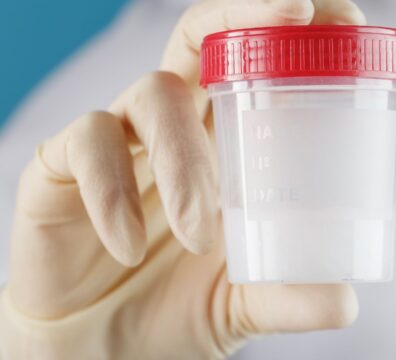🧪 Quello che ogni uomo dovrebbe sapere sull'analisi dello sperma (spermiogramma)
Se state pianificando di diventare papà, è probabile che abbiate già sentito parlare di analisi del seme-noto anche come spermiogramma. Ma cosa comporta esattamente? E cosa significano davvero tutti quei numeri e quei termini?
Vediamo di spiegarlo in modo sensato, senza bisogno di una laurea in scienze.
📦 Che cos'è un'analisi del seme?
L'analisi del liquido seminale è il test più comune per valutare la fertilità maschile. Esamina una serie di caratteristiche chiave dell'eiaculato di un uomo per vedere quanto gli spermatozoi siano in grado di raggiungere e fecondare un ovulo.
Questo test viene eseguito in un laboratorio certificato, di solito dopo che 2-7 giorni di astinenza sessuale. Il campione viene prelevato tramite masturbazione in un contenitore sterile e il laboratorio lo analizza entro un'ora per garantire la massima precisione.
🧬 Quali sono i parametri chiave di un'analisi del seme?
Ecco i principali elementi che il laboratorio esaminerà:
- Volume dello sperma
- Normale: ≥1,4 mL (OMS 2021)
- Troppo basso? Questo potrebbe indicare problemi alle vescicole seminali o blocchi.
- Concentrazione dello sperma
- Normale: ≥16 milioni di spermatozoi/mL
- Un minor numero di spermatozoi non sempre significa infertilità, ma vale la pena di indagare.
- Motilità (Movimento)
- Motilità totale (tutti gli spermatozoi in movimento): ≥42%
- Motilità progressiva (spermatozoi che nuotano in avanti): ≥30%
Senza un buon movimento, lo sperma potrebbe non raggiungere l'ovulo.
- Morfologia (forma)
- La percentuale di spermatozoi che appaiono "normali" al microscopio. L'OMS non definisce un limite fisso in questo caso, ma molti laboratori usano forme normali ≥4% come parametro di riferimento.
- Vitalità
- Indica se gli spermatozoi sono vivi. È particolarmente importante se la motilità è bassa.
I test estesi opzionali possono riguardare anche:
- Frammentazione del DNA
- Leucociti (marcatori di infezione)
- Stress ossidativo
- Anticorpi che attaccano lo sperma
📈 Cosa significano i risultati?
Anche se uno o più valori sono inferiori ai livelli di riferimento, non significa che sei sterile. In effetti, fino al 5% degli uomini con valori "non ottimali" può ancora generare un bambino in modo naturale.
Considerate l'analisi dello sperma come un istantanea, non un verdetto definitivo.
🧠 La fertilità è un problema di coppia e la qualità dello sperma è solo un pezzo del puzzle.
Gli spermatozoi sono sempre in produzione
Ecco una grande notizia: Gli spermatozoi si rigenerano costantemente.
Ci vogliono circa 2-3 mesi per lo sviluppo di nuovi spermatozoi. Ciò significa che:
- Il test di oggi non definisce il vostro futuro.
- Si possono fare molte cose per migliorare la salute degli spermatozoi per il prossimo turno.
🛠️ Cosa si può fare per migliorare la qualità dello sperma?
Indipendentemente dai risultati delle analisi del liquido seminale, ci sono tre passi importanti ogni aspirante padre può prendere:
- Consultare un medico
- In particolare un urologo o uno specialista della fertilità
- Escludere infezioni, problemi ormonali o altre condizioni curabili.
- Adotta una persona sana Stile di vita
- Mangiate una dieta equilibrata e ricca di antiossidanti 🥦
- Mantenere un peso sano
- Evitare il fumo, l'eccesso di alcol e l'esposizione al calore (vasche idromassaggio, computer portatili in grembo).
- Fare esercizio fisico con regolarità, ma non eccessivamente.
- Sostenere la fertilità con Integratori mirati
- Prodotti come Fertilovit® Mplus sono stati appositamente sviluppati per nutrire la salute degli spermatozoi con zinco, selenio, CoQ10, folati, L-carnitina, e antiossidanti.
- Questi nutrienti possono contribuire a migliorare nel tempo la motilità, la concentrazione e la morfologia degli spermatozoi.
💡 Pensiero finale
Fare il primo passo per controllare la propria fertilità è già una grande vittoria. Non si tratta di perfezione, ma di capire il proprio corpo e di fare scelte proattive e intelligenti.
👉 La qualità dello sperma può cambiare. E con le giuste cure e il giusto supporto, potete fare una grande differenza in pochi mesi.
Riferimenti:
Mehmet Erhan Aydın, Özgür Özbek, Tevfik Çetin, Mustafa Sungur, Coşkun Kaya, Aykut Aykaç. L'impatto dei nuovi limiti di riferimento 2021 dei criteri dell'Organizzazione Mondiale della Sanità per le analisi dello sperma. Journal of Men's Health 2024 vol.20(6), 21-24
Manuale di laboratorio dell'OMS per l'esame e il trattamento dello sperma umano. Sesta edizione: https://iris.who.int/bitstream/handle/10665/343208/9789240030787-eng.pdf?sequence=1

